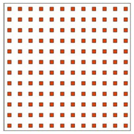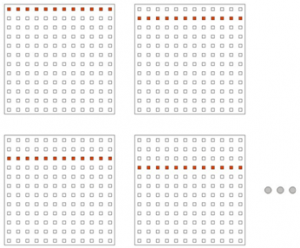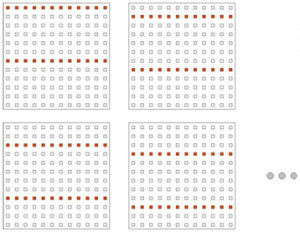What is the Scan Mode of LED Display?
This is a complex problem that plagues every new practitioner. How does it work?
And what’s this effect for LED display? Here give you detailed information:
The mean LED is driven by IC, which means LED is off. Each drive IC has 16 pins and can drive 16 LED chips at the most. Static drive mode means all the LEDs on the LED module are driven by IC at any time, like the following image:

1/12 scan mode means 1/12 LEDs on the module are driven by IC at one time, and the next time other 1/12 LEDs are driven.

1/6 scan mode means 1/6 LEDs on the module are driven by IC at one time, and the next time there are other 1/6 LEDs that are driven.

Note: Because the scan mode changes scan lines very fast, and can’t be distinguished by human eyes, so visually, we feel the LEDs are light on all the time, but in fact, the scan mode has LEDs off when we see it.
So, the low scan mode can save drive IC, and save cost. But what’s it affects the LED screen?
1) Brightness:
The high scan with more LED lights on at one time, so the brightness is higher than in lower scan mode, in theory, for the same LED display, the static scan is double the brightness of 1/2 scan, and 1/4 scan is double the brightness of 1/8 scan. But this is not the absolute formula, because sometimes there doesn’t need so much brightness, and will slow down the current, and finally cut the brightness.
2) Refresh rate:
Usually, a lower scan with a lower refresh rate than the higher scan. And this is not applicable to the multiple formulae as brightness, because the refresh rate mainly depends on the PCB design.
3) Power consumes:
In theory, the higher scan, the higher power, this is applicable to multiple formulae, for example, a 1/5 scan is double the power consumed by a 1/10 scan. Also, it restricts by the current, factories may reduce current and finally reduce power and brightness.
Therefore, it’s very important to choose a reasonable scan mode for LED display, not the higher the better, also not converse. It needs to be based on the brightness, power, refresh rate, and cost, and finally design a good LED screen.




